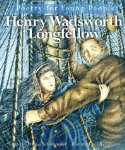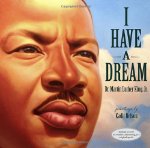Sometimes poets and writers are inspired by the strangest things. They hear or see something that creates a little seed of an idea in their heads, and if they are lucky this seed grows into a piece of writing. For centuries writers have been inspired by art, and in today's poetry title we get to explore some modern day examples of poems that were art inspired.
Edited by Jan Greenberg
Poetry Picture Book
For ages 8 to 14
Abrams, 2008, 978-0-8109-9471-3
For centuries people have been writing poems that were inspired
by works of art. They have sat in front of a painting, a piece of pottery, or a
sculpture, and words have come to them that describe that work of art or that
capture the essence of the piece. Often the poetry is a deeply personal
reaction to the artwork, one that is unique to the poet.
In this very
unique collection of poems Jan Greenberg offers us poems written by poets from
around the world that were inspired by artworks from around the world. She
invited poets to choose “artworks that were representative of their own
cultures,” and most of the poems in the collection were written specifically
for this book.
The poems are
divided into four categories: Stories, Voices, Expressions and Impressions. The
first story poem was written by Pat Mora, and she offers her readers the poem
in both Spanish and English. In the poem she describes a collection of ceramic
and painted wooden figurines that are part of a scene. The characters in the
scene are all musicians who play on drums, guitars, pipes, and other
instruments. Seeing the musicians reminds the poet of her “abuelo,” who plays
his violin outside at sunset. His playing encourages other musicians to join
him and soon the “whole town floats / on the rhythmic river of music.”
In the Voices
section of the book poets gives the characters or scenes in art works a voice.
For example, from the Netherlands we hear the voice of woman who appears in a
painting that was created by Hans Memling in 1480. Poet Anne Provoost tells the
story of the young woman who is making a lace collar for her father when a
young man comes to her and “falls on his knees.” He tells her that “the light I
have only seen/ in the stained glass of cathedrals” shines out from her face.
She is shocked that anyone would consider her attractive and is drawn to him.
The poems in the
Expression section are more contemplative in that they explore “the transaction
that takes place between the viewer and the art object.” From Canada there is a
painting of a young woman standing on the deck of a ferry that is going to
Prince Edward Island. She is looking straight at us through her binoculars. The
poet thinks that the girl is not really looking through the binoculars.
Instead, she is hiding behind them, the way people in “alien atmospheres / are
awkward inside the costumes they wear for safety.”
In the final
section, Impressions, poets describe what they see when they look at their
chosen artwork. They use all kinds of patterns of words to show us what they
see, and it is interesting to discover that what we see may not be what another
person sees. A painting by the Japanese painter Ei-Kyu may look like the birth
of a planet to one person, but to the poet, Naoko Nishimoto, the painting shows
a dream that blooms behind closed eyelids.
At the back of
the book readers will find biographies of the poets, the translators, and the
artists. There is also a map “showing where each poet, translator, and artist
included in this book lives or lived.”
This is
remarkable book, one that young readers will find interesting and
thought-provoking.









